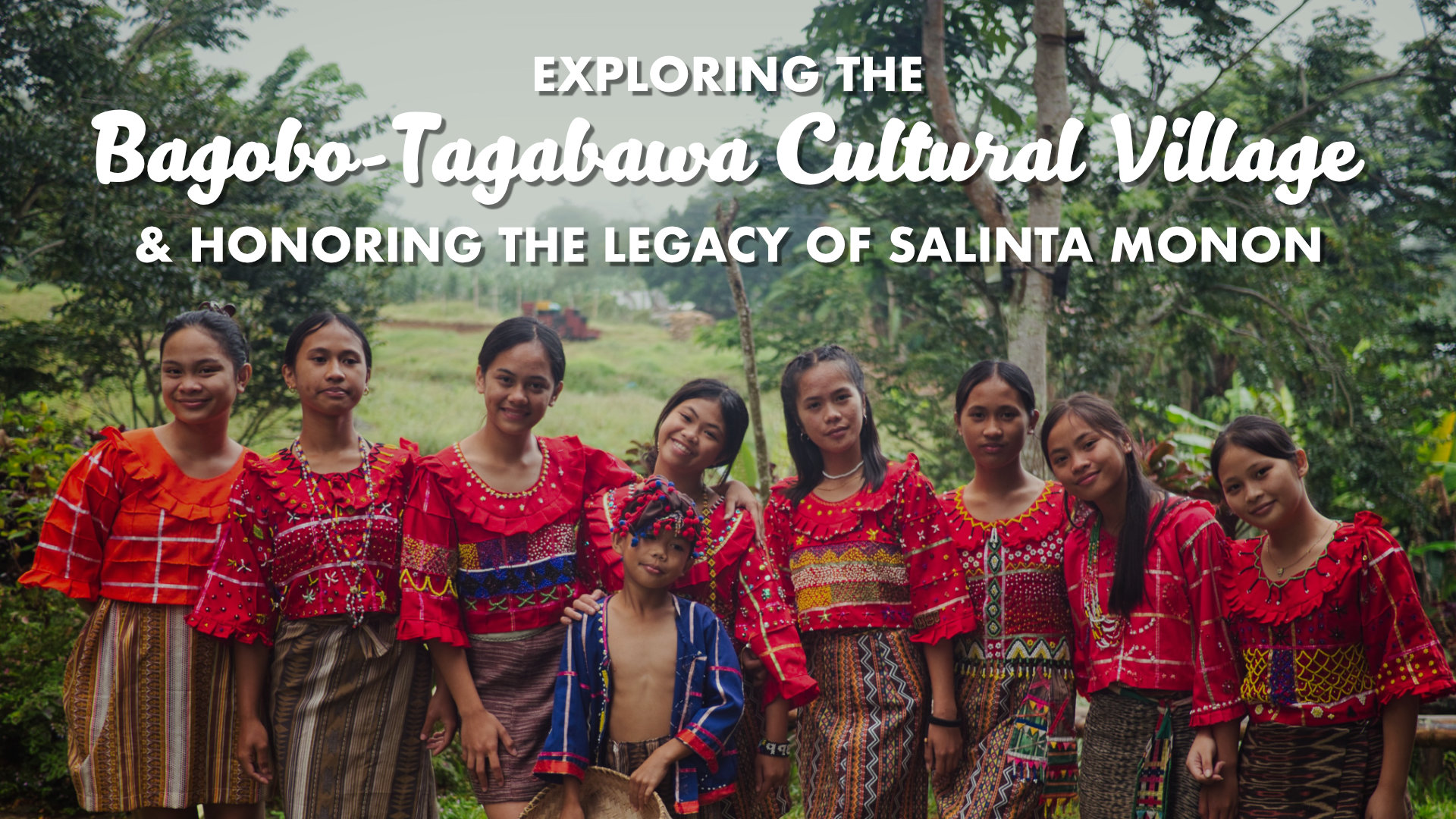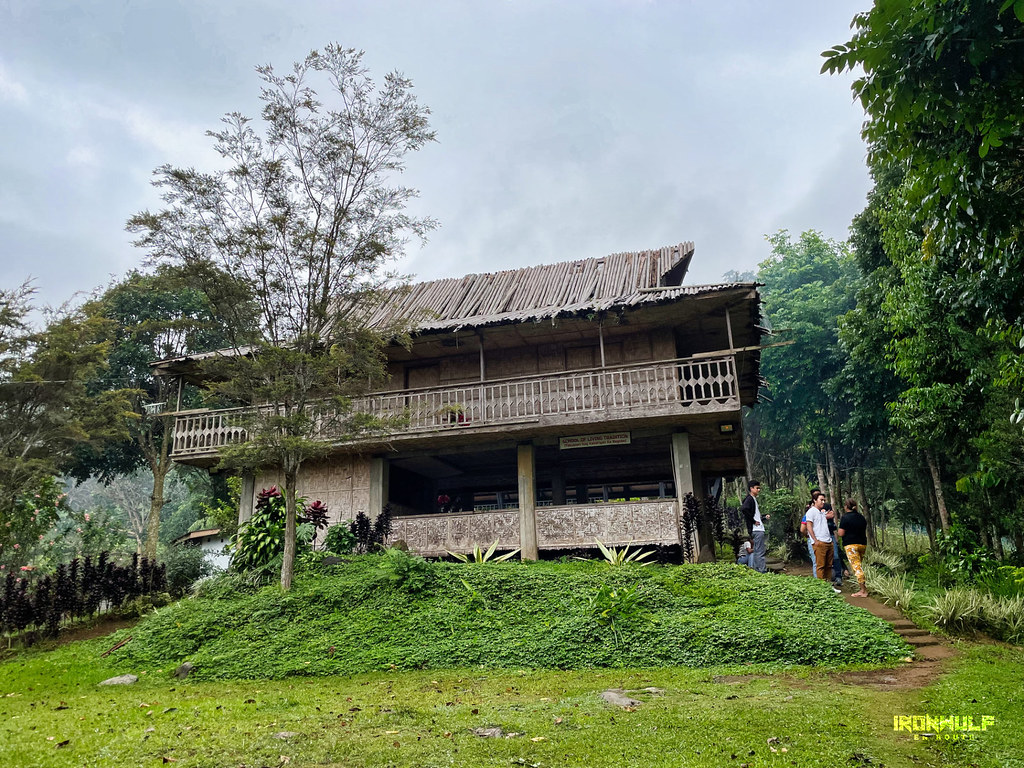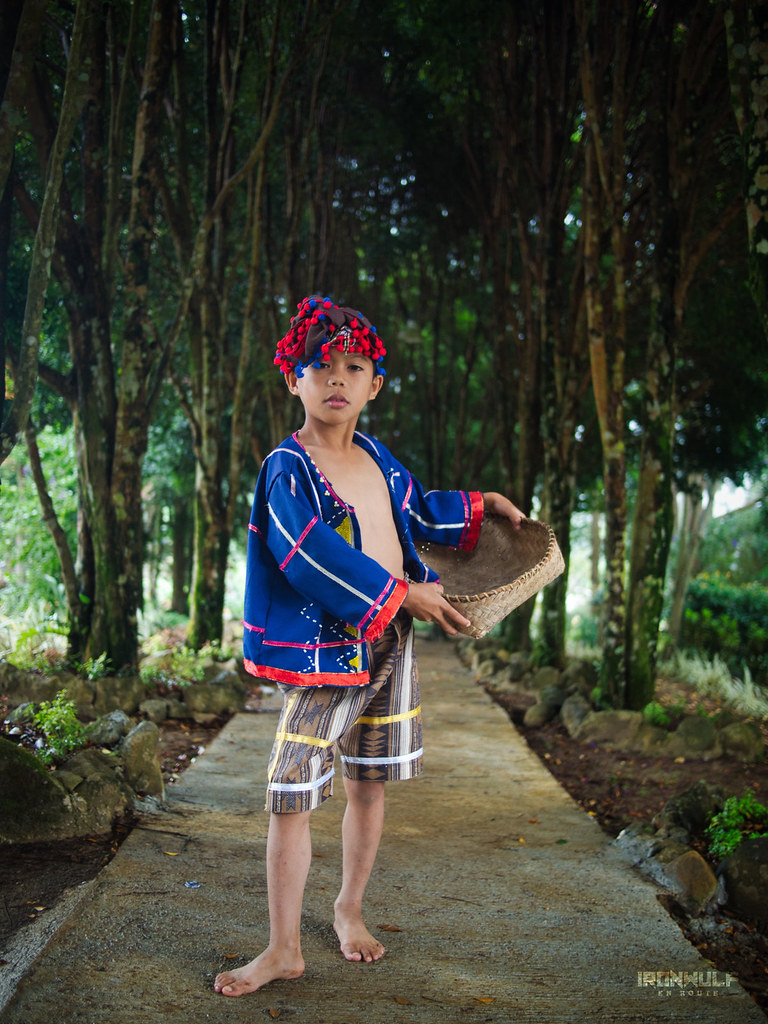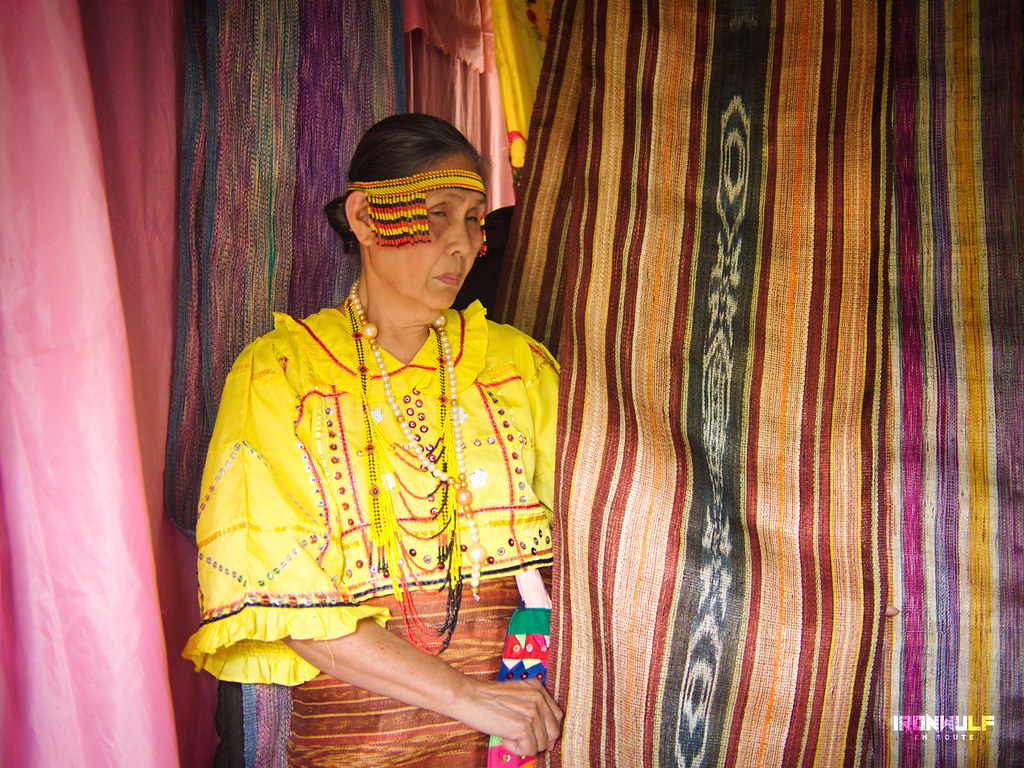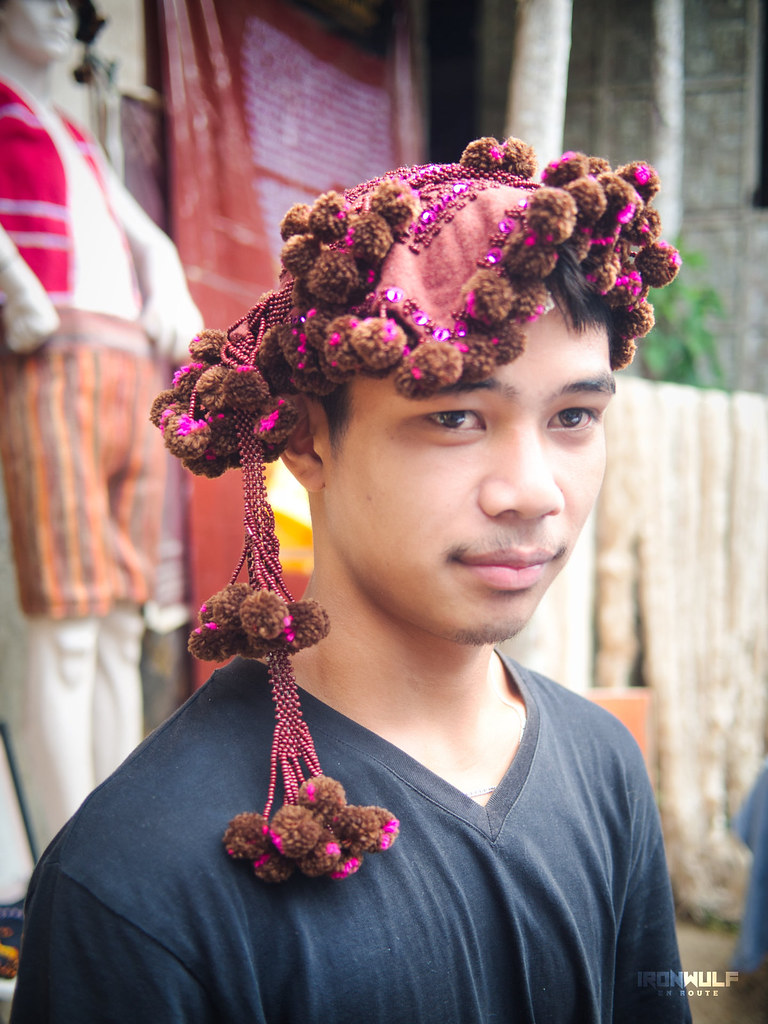Nestled at the foothills of the mighty Mt. Apo, the highest mountain in the Philippines, the Bagobo ethnic group thrives. During our journey to Davao del Sur, we had the privilege of immersing ourselves in the culture of the Bagobo-Tagabawa, also known as the “People of the South.” This subgroup, residing in villages like Tibolo and Bansalan, provided us with a glimpse into their rich heritage, with a special focus on the Bagobo-Tagabawa Cultural Village and the legacy of Salinta Monon.
The Bagobo-Tagabawa Cultural Village
The Bagobo-Tagabawa people, primarily agricultural, cultivate rice and crops while occasionally raising livestock. Rooted in animism, some have also embraced Christianity. Their stilt bamboo houses with thatched roofs, situated in Tibolo, showcase their unique lifestyle. Adorned in vibrant garments reflecting their artistic skill, the Bagobo-Tagabawa are skilled in beadwork and weaving.

Our visit to the Cultural Village, perched on a hill in Tibolo, allowed us to experience their warm hospitality in Datu Ruben Hall. The open function hall, cooled by a constant natural breeze, and surrounded by trees and foliage, created a pleasant atmosphere. The Bagobo-Tagabawa treated us to captivating traditional music and dance, accompanied by mesmerizing gongs. We indulged in native delicacies such as nilutlot na manok, native corn coffee, and lemongrass tea. A short walk from the hall leads to the School of Living Traditions (SLT), where enthusiasts can deepen their understanding of Bagobo-Tagabawa crafts and traditions. For those seeking an immersive experience, accommodations in native houses are available.
For more information on the Bagobo-Tagabawa Cultural Village, visit their Facebook Page facebook.com/profile.php?id=100057607742350

Salinta Monon, the Last Bagobo Weaver
In our journey to Bituag, Bansalan, we paid homage to Salinta Monon, the “last Bagobo weaver.” Renowned for her Bagobo-Tagabawa ikat textile weaving, known as “inabal,” Salinta Monon earned the title of National Living Treasure in 1998. Visiting her humble residence, we were graciously welcomed by her granddaughter, Love, and her first student, Estella, along with their families. Salinta Monon passed away on June 4, 2009, leaving behind a legacy symbolized by her golden Centennial Bust Statue displayed outside her house along with samples of inabal, tangkulo scarf, and abaca fibers.
On May 16, 2022, the municipal government of Bansalan unveiled the Birth Centennial Bust Statue and Marker in commemoration of Salinta Monon’s centennial year. Through the dedicated efforts of her relatives, community, and organizations, her home has transformed into a cultural center preserving the heritage of Bagobo-Tagabawa weaving.
For more info on Inabal and Bagobo Textile Weaving, contact her granddaughter Monon ReyRose at facebook.com/profile.php?id=100009208257346
Our exploration of the Bagobo-Tagabawa Cultural Village and the tribute to Salinta Monon provided a profound insight into the rich cultural tapestry of the Bagobo-Tagabawa people. The experience left us with a deep appreciation for their traditions, craftsmanship, and the importance of preserving these invaluable aspects of their heritage.


Ferdz Decena is an award-winning travel photographer, writer and blogger. His works has found print in publications such as Singapore Airlines’s Silver Kris, Philippine Airlines’ Mabuhay, Cebu Pacific’s Smile and Seair InFlight. He has also lent his expertise to various organizations like the Oceana Philippines, Lopez Group Foundation, Save the Children and World Vision, contributing quality images for their marketing materials.
